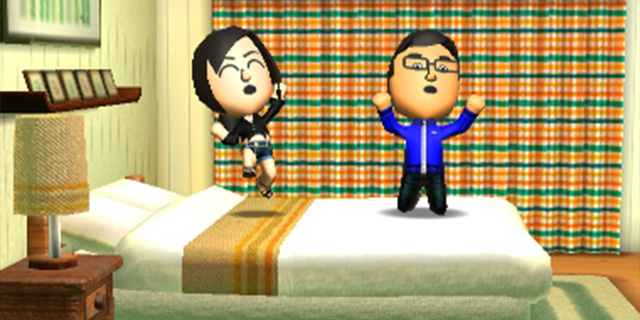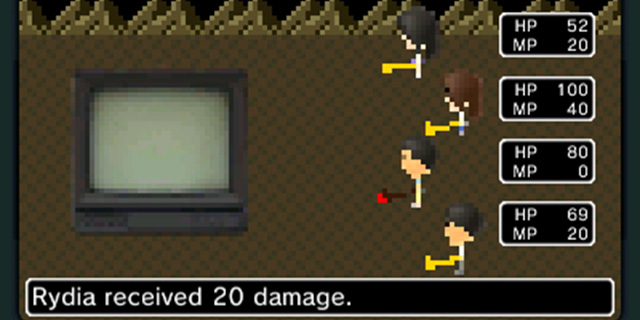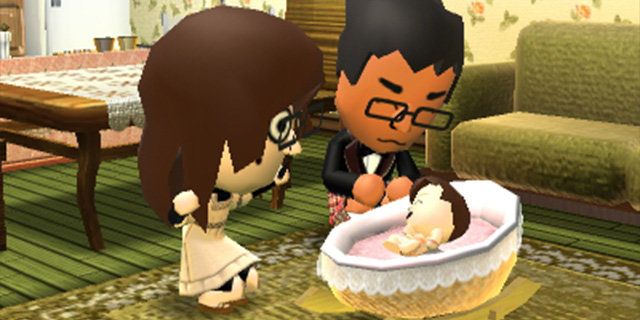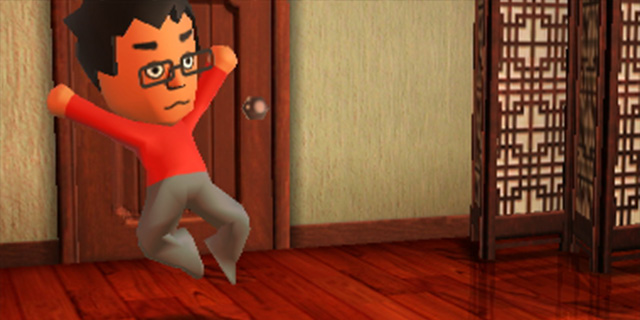
Tomodachi Life is a weird game to describe. Think of it as a mix of Tamagotchi, The Sims and Animal Crossing. As the island’s proprietor, you create Miis, move them into an apartment complex and ultimately become their problem-solver. They live their daily lives, meeting fellow residents on the island that you make at your discretion, become friends, fall in love, get married and, if you’re lucky, have kids as well.
While this might be the first appearance of the Tomodachi series here in the West, the 3DS release is actually the second game in the franchise. Tomodachi Collection, released in 2009 in Japan, actually introduced Miis into DS gameplay. Since the DS didn’t have an internal Mii Maker like the 3DS does, it was an interesting choice to have a game completely surrounding them. This sequel was released in 2013 in Japan and brought here this month.

Sharing is caring
Nintendo’s increased sharing continues here, with dedicated screenshot buttons for both screens, integrated Image Share and Mii QR codes. Unlike normal codes, in-game ones include a Mii’s qualities and items, meaning you can share a Mii that acts like you instead of hoping friends tweak personality settings just right. – Graham Russell
The more Miis you have on your island, the more your residents start to take on lives of their own. They begin taking on TVs and glass shoes in RPG-style adventures, or even reporting news on a possible sighting of centaurs that oddly resemble your residents.
While this all sounds weird, it’s one of the most endearing qualities of the game. It never takes itself too seriously, and just watching how Nintendo gets past the limitations of a handheld and setting it apart from other life simulation games is something to experience.

A voice for the voiceless
A large part of the game’s localization process focused on implementing English into a game built around a speech synthesis system. While Japanese is still easier for pulling that off, the English version works surprisingly well. You can customize how friends sound, with various accents and vocal qualities, and whenever you can, you’ll want to leave the 3DS’ volume up to hear them. – Graham Russell
The game encourages you to build a community as it unlocks more things around the island. As your island’s population grows, you unlock various activities that players can enjoy, as new items to buy that will help your Miis in the long run. Best of all, Tomodachi Life meshes very well with anything else you’re playing at the moment. Unlike most life simulation games, it doesn’t need your attention 100 percent of the time. You check in on your Miis, help them with their problems, close the 3DS and maybe check back in a little bit to see if anyone needs anything. It never reaches the level of your creations dying on you (The Sims) or your neighbors getting angry at you (Animal Crossing).

Unconventional demo
Want to give the game a shot by checking out a demo? You can do it, but not by simply heading to the eShop. The “Move-In Edition” is distributed through two codes given to every buyer, so you’ll need to find a friend who’s already taken the plunge. If you do, though, the demo allows your island to transfer over to the full game. – Graham Russell
Relationships are one of the main highlights of this game. Between men and women, relationships can mean additional residents in the form of kids who are raised in houses given to the Mii couple after they get married.
When the child reaches a ripe age to become an fully integrated resident, you have the choice of letting them become a traveler (via StreetPass) to see the world, or give them their own apartment where they could form their own friendships and find happiness like their parents.

Tomodachi Life is a wonderful little game, but it needs to be experienced to be truly understood. The joy of creating your own residents and seeing them talk and do silly things with each other makes this game worth picking up. You don’t need to dedicate too much time, unlike similar games, and it’s hilarious to see the type of humor Nintendo integrates in this game by working with its simple creations.
Pros: Hilarious and charming moments, wonderful Mii integration, design allows for easy pick-up and put-down
Cons: Moments tend to repeat themselves



















